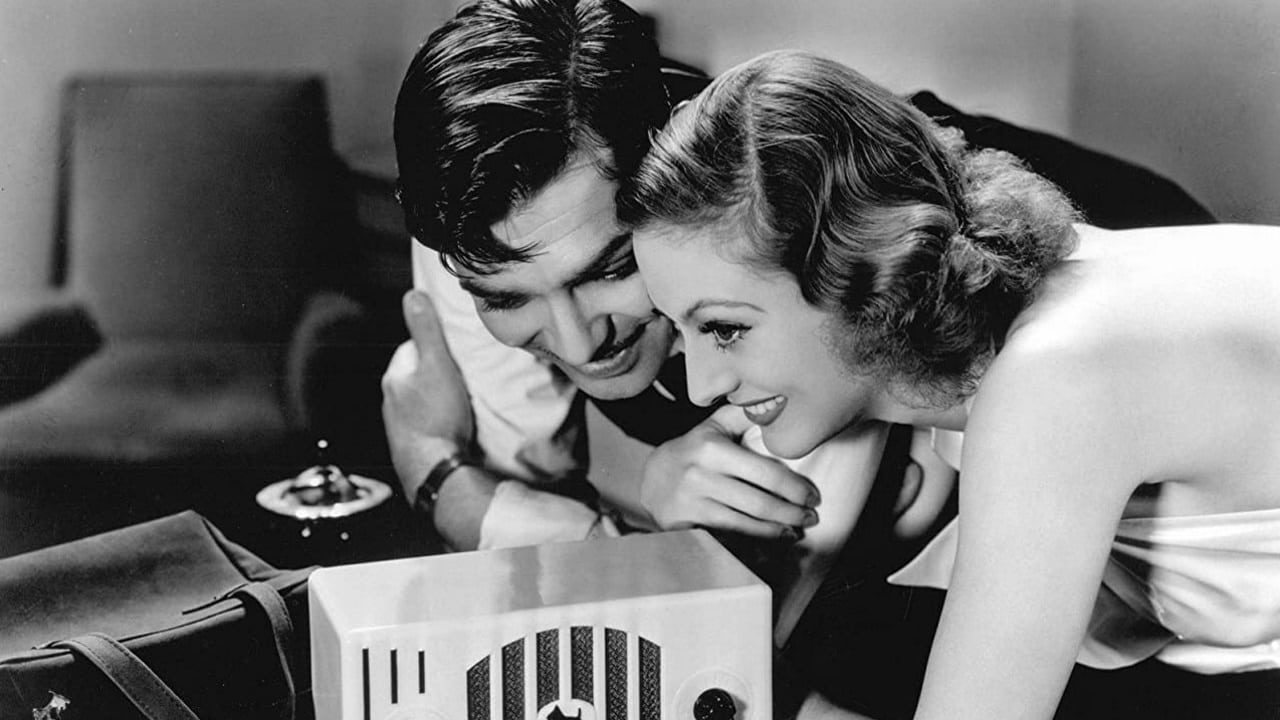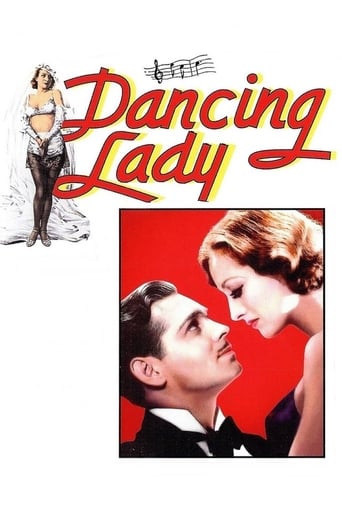

Yawn. Poorly Filmed Snooze Fest.
... View Morerecommended
... View MoreA bit overrated, but still an amazing film
... View MoreThe acting is good, and the firecracker script has some excellent ideas.
... View MoreSpoilers. Observations. Opinions.Okay. Blah. I did ff through a lot of the dialogue and triangle banter. I hate black and white. That made this film somewhat of a downer. No real Busby Berkeley here, but I sort of liked the Berkeley-esque Harlequin-esque special effects. Gable was too mean most of the time. Was he a clone of Warner Baxter in 42nd Street? Let's put on a show. Yes. No. Where's da money? Oh, I know. Some rich guy's the answer. $$$$$$$$$$$. Guy Kibbee. Franchot Tone. Baxter was dying of some illness. Gable was dying of meanness and diarrhea of the mouth. The Stooges were adorable here, except for the slapping. I normally do not like them, and don't appreciate their brand of hilarity. Fred Astaire too wooden. Looked like a kid-adult Pinocchio. Nelson Eddy. Did we even see him? Wasn't any Jeanette MacDonald here. No plot for Eddy. He just told a lot of ancients that they should be 1933 "modern", but today in 2017 this film ITSELF is 84 years old and quite a bit outdated. Oh, the irony! Nelson, you and 1933 are so far back in the past that we here in the future are snickering at your pomposity. Tone looked divine. He could really wear that top hat and tails. So dashing and debonair. Or was that Astaire's forte?Crawford's Adrian dancing costumes were excellent. Did she have the huge flailing arms, awkward bent-over posture and gawky tap steps of Ruby Keeler in 42nd Street? Still, it was enjoyable watching her as an earnest hoofer instead of her meanie films of years later. Anyway, Adrian never failed, and his costuming still makes me love his designs. Dirndls, subserviency white aprons, lederhosen, alpine hats, stereotypical "bier". Wooden shoes clopping all over the cobblestones? Hitler just ate this all up. He must have loved Astaire looking like that goofy wooden Pinocchio. Uncle Adolph must have been proud. Heil Freddie. Besides, wasn't Astaire's original last name Austerlitz really German or Austrian? Did Astaire and his sister Adele change their last name because of the Germanic inference, just like the British royal family did in the era of World War One? Being German wasn't cool at that time because they were the enemy, while in this film of 1933 Astaire is clowning it up as if Germans are the greatest guys in all the world. The super Adolph was soon coming to town, but the Germans were in 1933 being portrayed as one big, friendly, goofy hail-fellow-well-met. Anything for a buck, Astaire, who will make a lot more bucks later with that divine Ginger Rogers. At least Ginger Rogers was elsewhere, having a good old time in 42nd Street. MGM, b/w musicals were not your forte. When you switched to color, you killed everybody else. The lion looks terrible in black and white. Poor Leo. I did like the old hag women being turned into pre-code Art Deco vamps. That was a set of quite good special effects. I am a degreed historian, futurist, actress, singer, dancer, fashion designer, stage makeup artist, film critic and movie reviewer.
... View More"Dancing Lady" (1933), the fourth of no less than seven movies in which Clark Gable and Joan Crawford appeared together – is a variant on "42nd Street" with Gable as the harassed but vigorously energetic producer – much more energetic than Warner Baxter. In fact, Gable's Patch Gallagher even works out in a gym! In execution, however, the movie emerges as a Warner Brothers musical in reverse. This was not exactly what Metro-Goldwyn-Mayer had intended, but the problem is that instead of building to a spectacular musical climax, all the really invigorating numbers occur earlier on. Despite the presence of Fred Astaire and Nelson Eddy – the latter unable to mime or synchronize to his recorded voice very ably – Dancing Lady's musical climax is weak. And so is the predictable story's ending as well! Available on an excellent Warner Archive DVD.
... View MoreMetro's attempt to duplicate the success of 42nd Street with some of their biggest stars served as the screen introduction of Fred Astaire even though he really isn't properly showcased. Joan starts out as a cooch dancer but because of grit, determination, the right connections and a dancing talent that is apparently great she becomes the star of a Broadway bound show. I say apparently because with the evidence on display that Joanie offers the talent is only in her mind. She exudes star power to burn and while she's not exactly a glue foot her dancing movements especially above the waist are graceless and overly earnest, there is more than a whiff of desperation to them. Franchot Tone is stuck in the slick aimless society boy role that curtailed his career but Gable is brimming with virility and matches Crawford's glittering star measure for measure.
... View MoreMGM goes 42nd Street with this backstage film about a show being made. The plot can be said to mirror Crawford's own transition at the time, from wild flapper in the 1920's, here a burlesque chorus girl who bares skin, to more or less respectable dramatic star, here the lead in a big Broadway show. Other things of interest: Fred Astaire appears for the first time before a camera. A Ted Healy and his Stooges are also here.All told, this is a curio, though very watchable straight through. That is because the big show fought over all through the film—a make or break situation—when finally staged, is only vaguely relevant to the story.Oh, it has been very nicely conceived. 1) The Depression-era touch to involve the audience is that we open with everyone rushing to attend the risqué burlesque show, a hobo asks for a dime and is instead given a ticket to the show.2) The show is initially conceived by the Gable character as 19th century fluff, irrelevant entertainment. Mid-way, circumstances (frustrated love and money) inspire him to scrape the idea and bring the show to modern times, threading it around Joan and making it relevant.3) The story in the film is about old money vs creative love, convenient marriage vs passion, tradition vs modernity; in the show, we start with a gaudy Bavarian number standing in for the old world, Joan and Fred take off on a magic carpet which smartly insinuates her lofty entrapment by the rich charming backer of the show, and when she lands, a parade celebrates her by magically ushering through a gate to modern times, the carriage becoming an automobile, the sets art deco, and so forth.As you can see, the show is not randomly abstracted from life, though initially it appears that way. But it does not, save for the magic carpet routine, weave itself very deeply with anxieties felt by the characters.Still, you will want to see the parting image of a radiant Crawford victoriously straddling a toy-horse with the kaleidoscopic phantasmagoria of a carousel spinning in the background. It is sublime, rivaling the best of Berkeley as one of the finest moments in 1930's musical. See if you can watch Joan in this orgasmic climax without sex in mind.
... View More